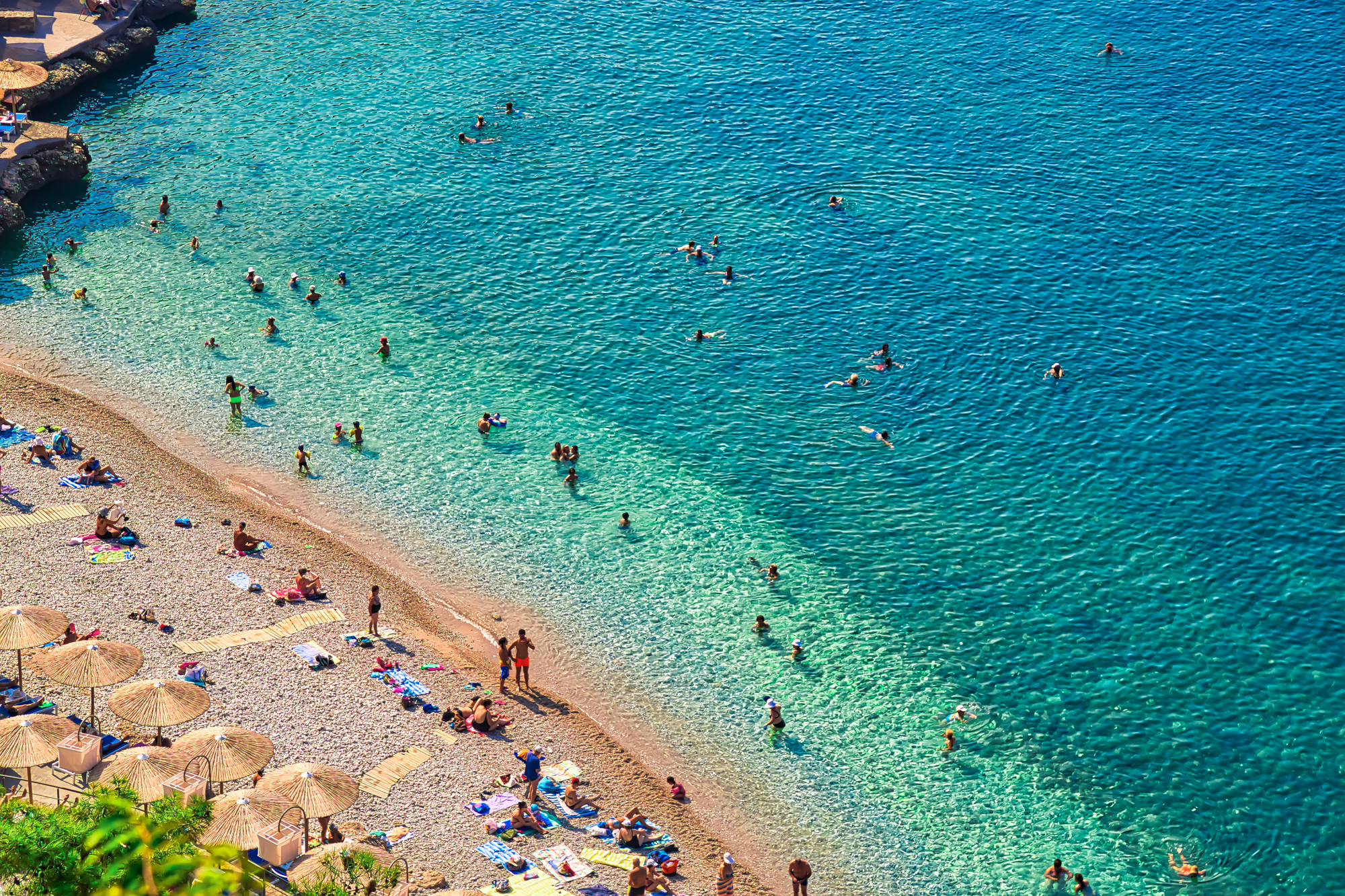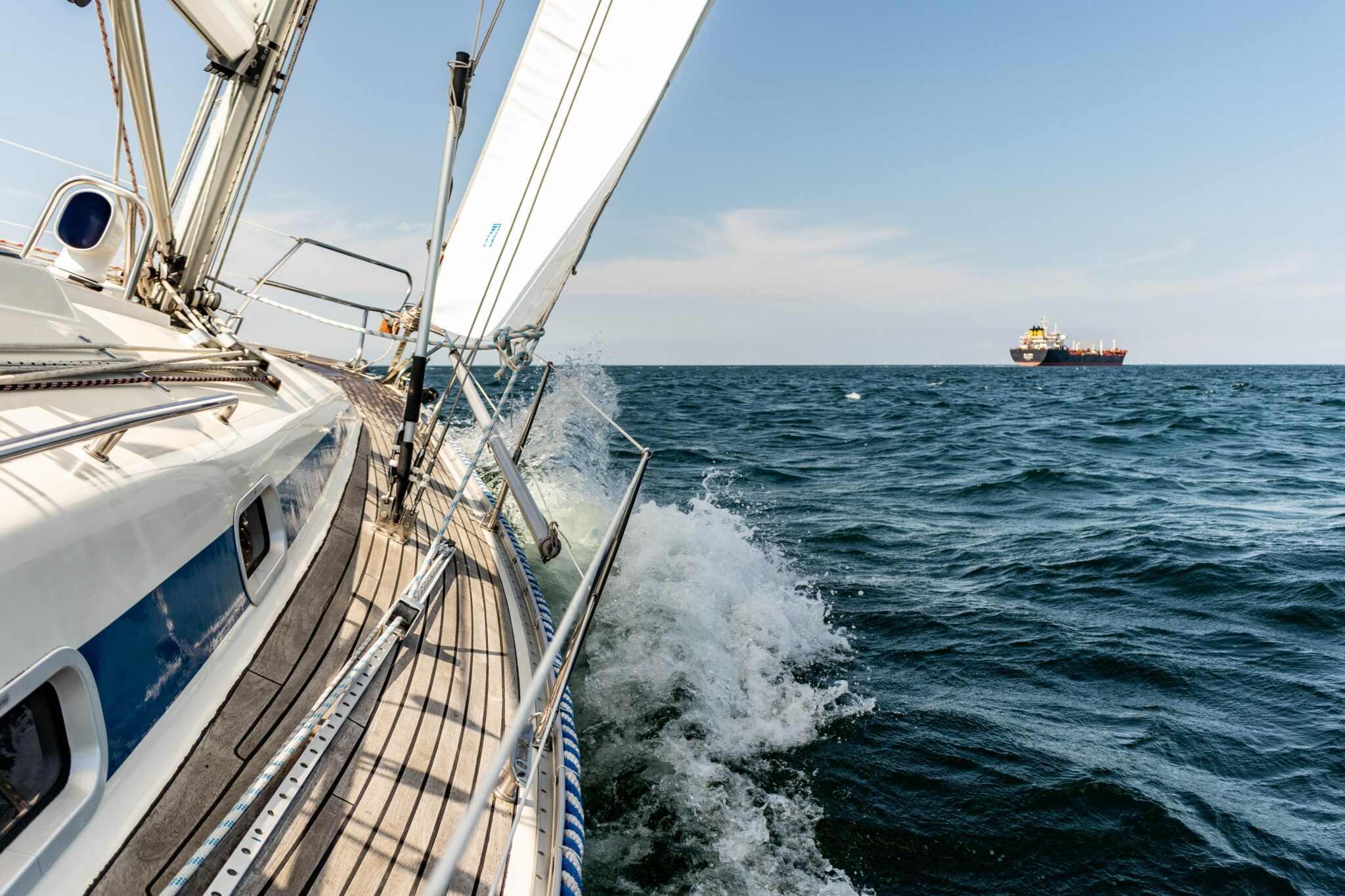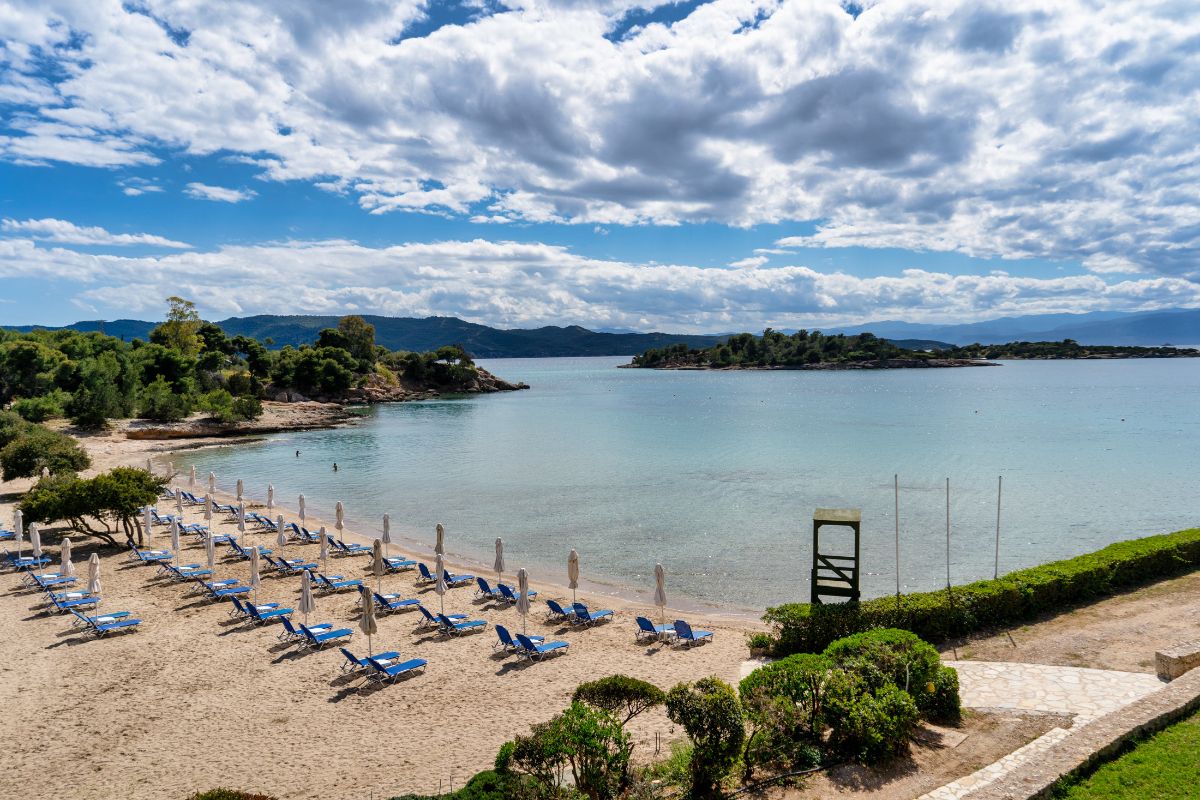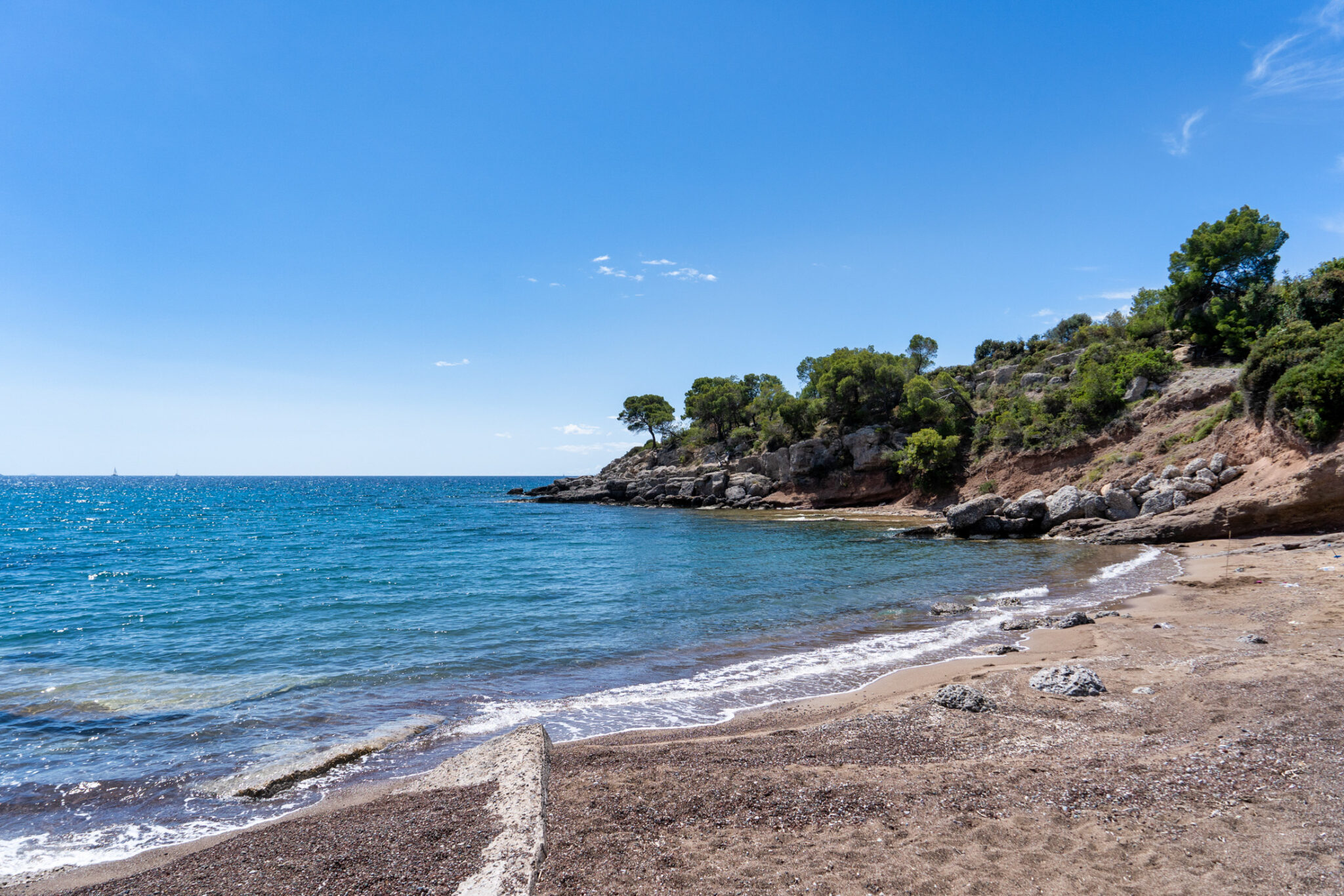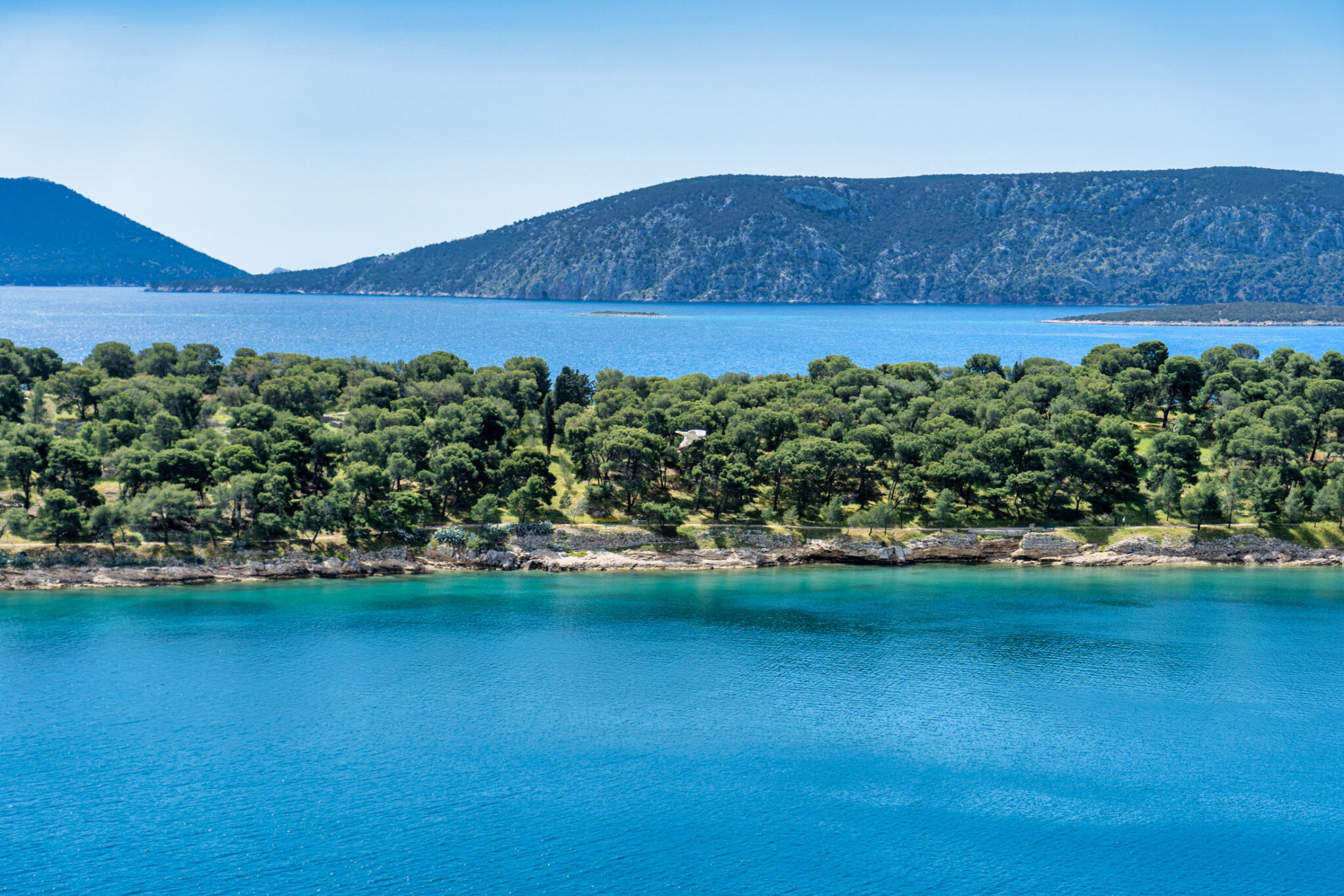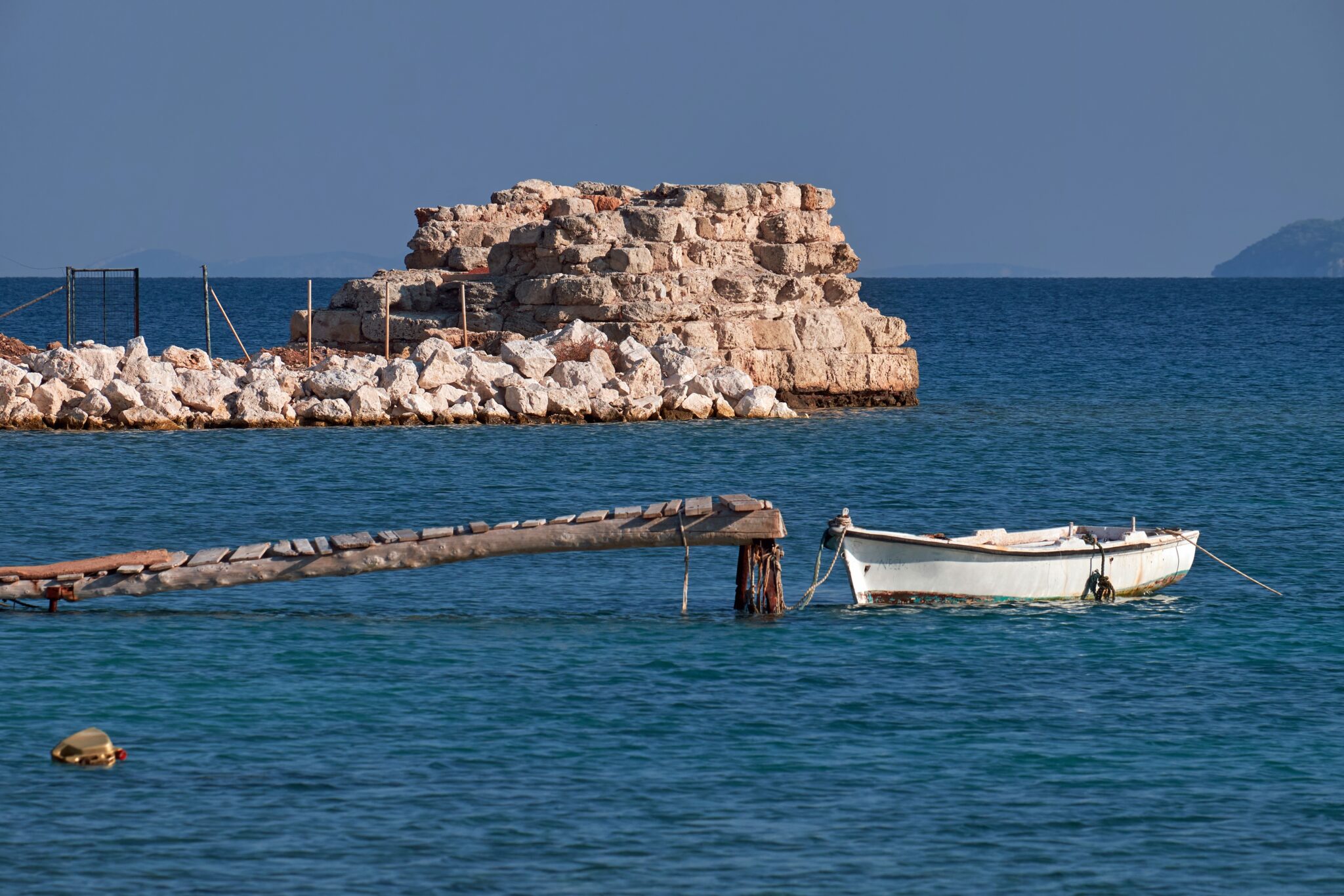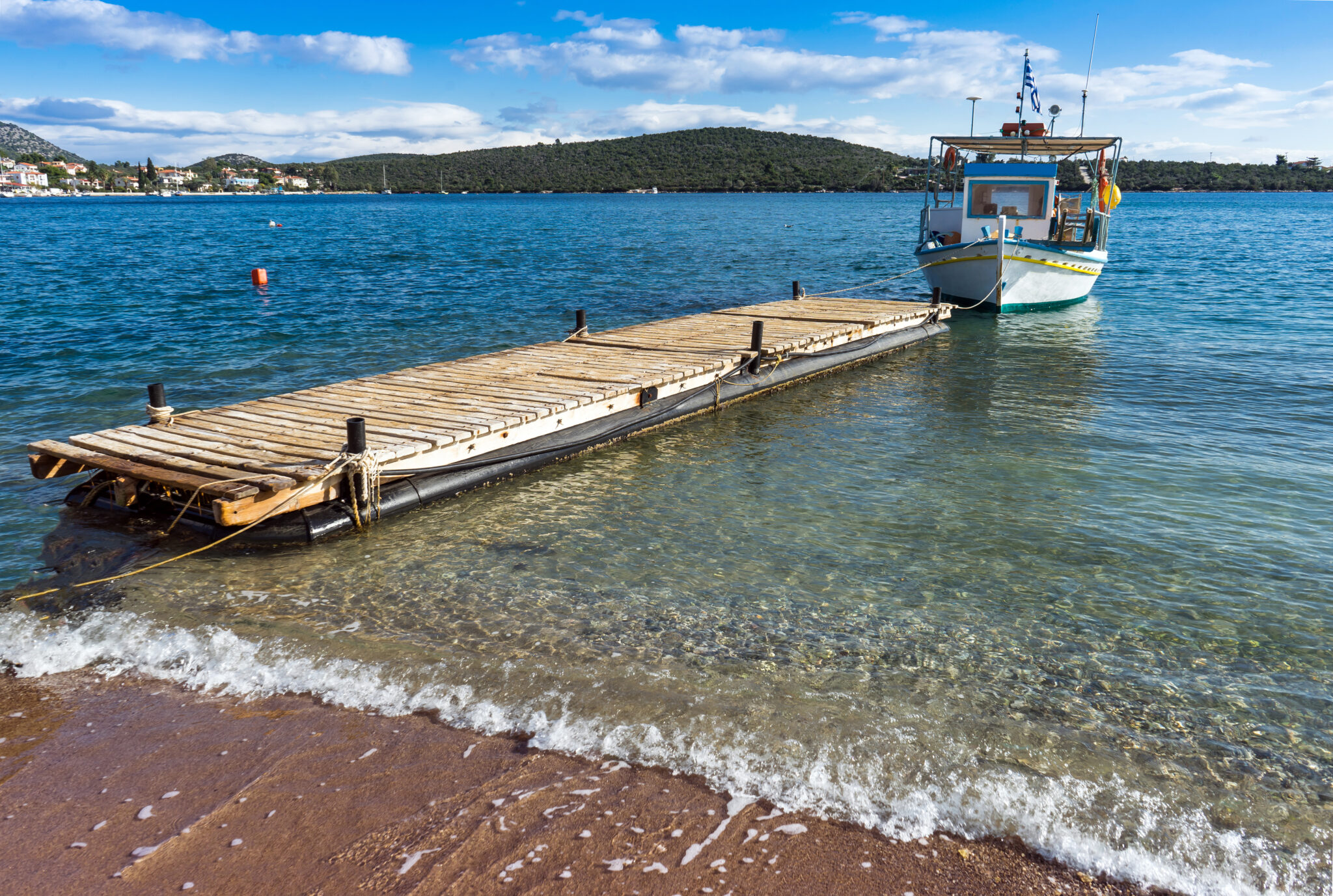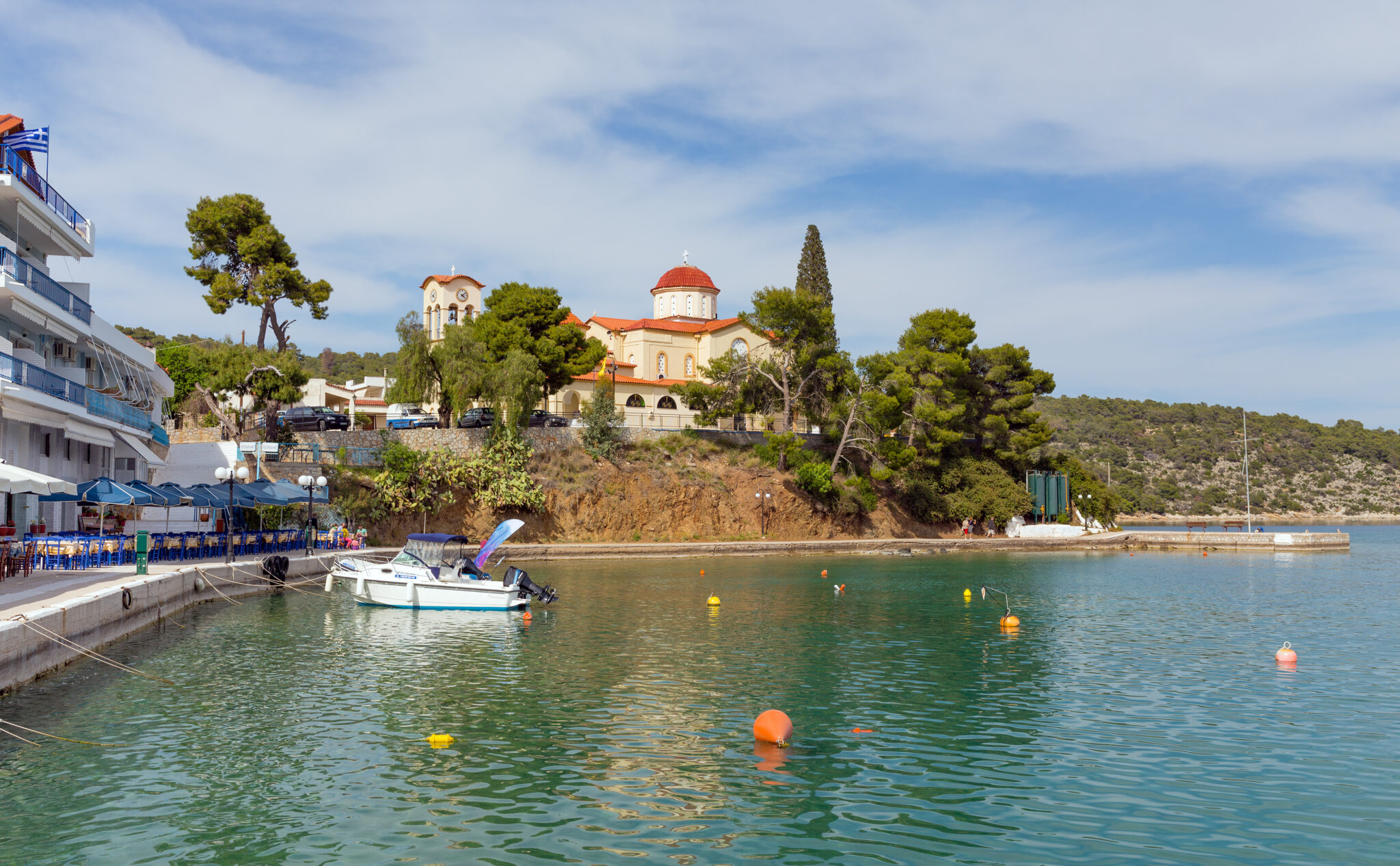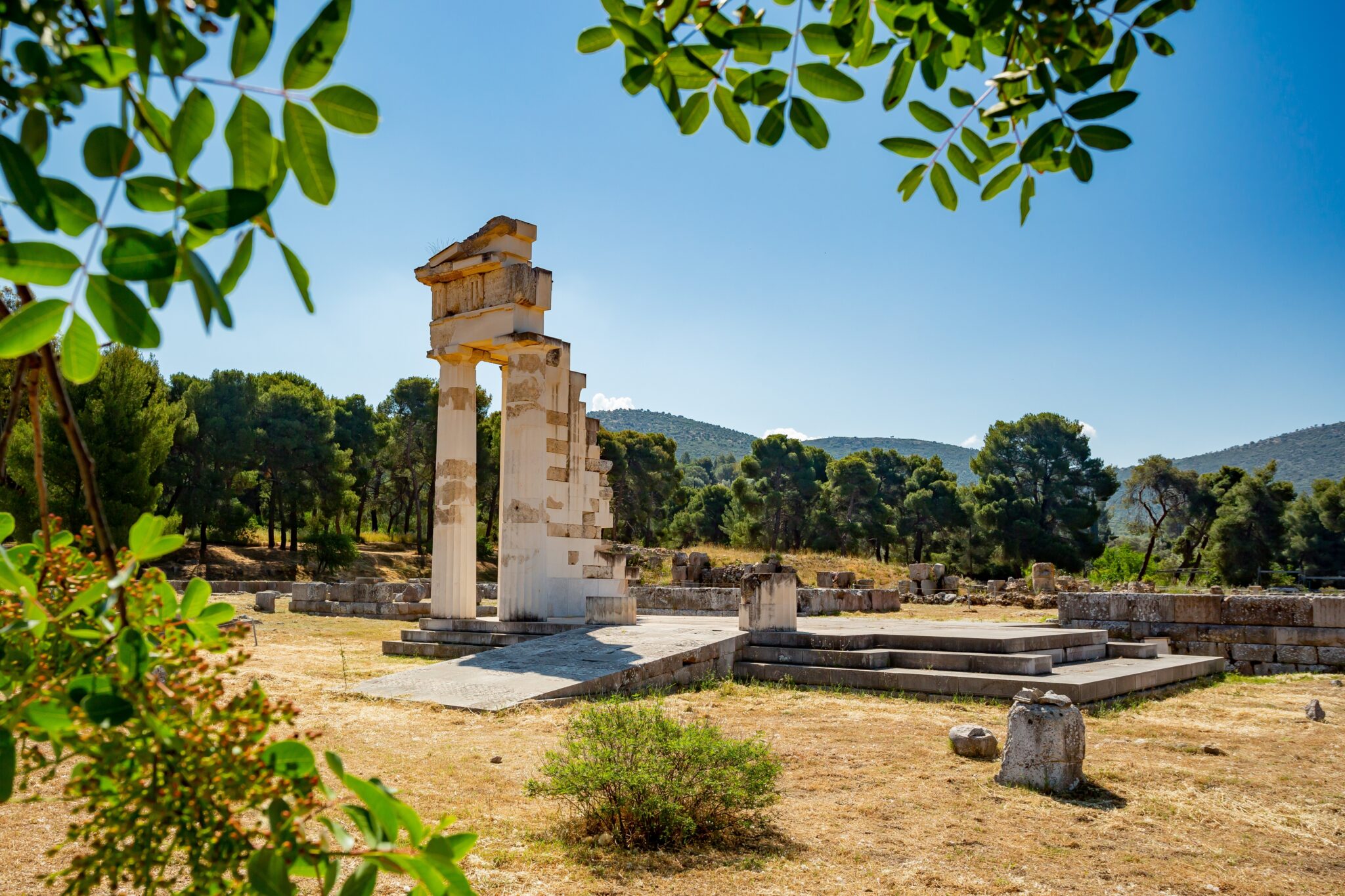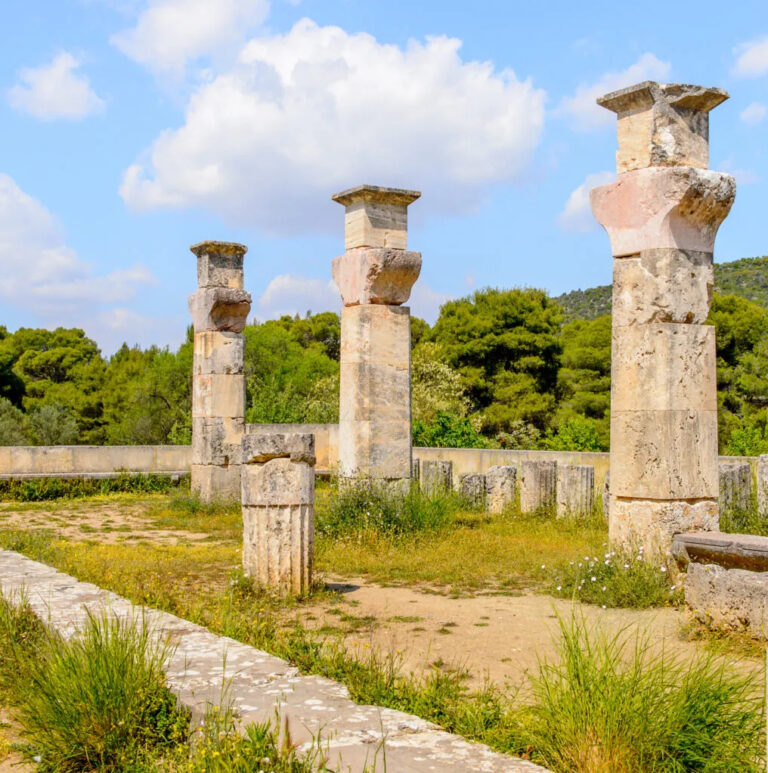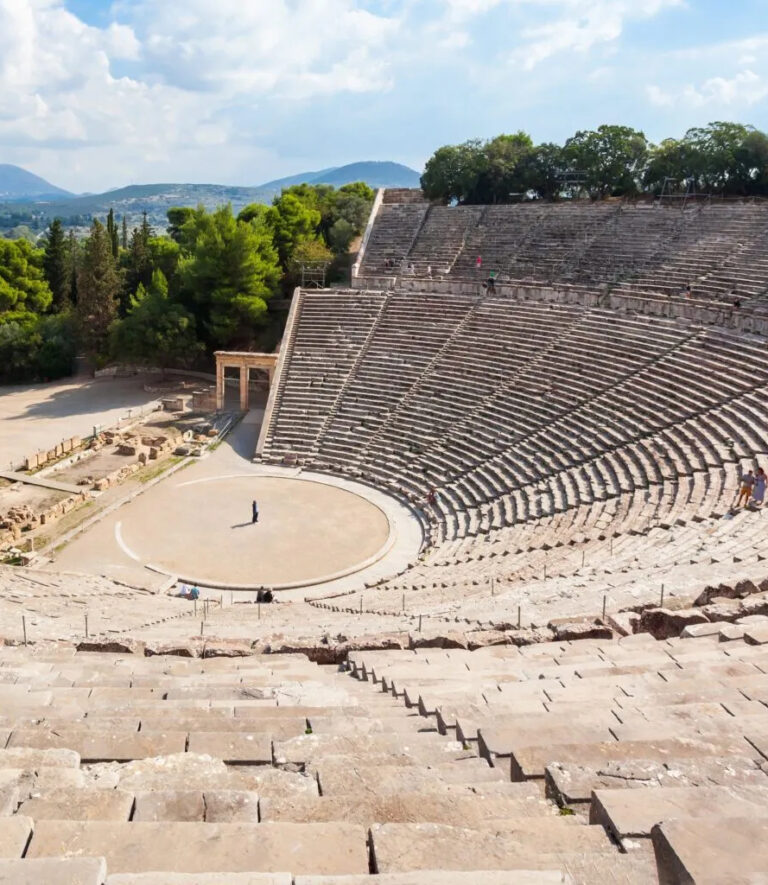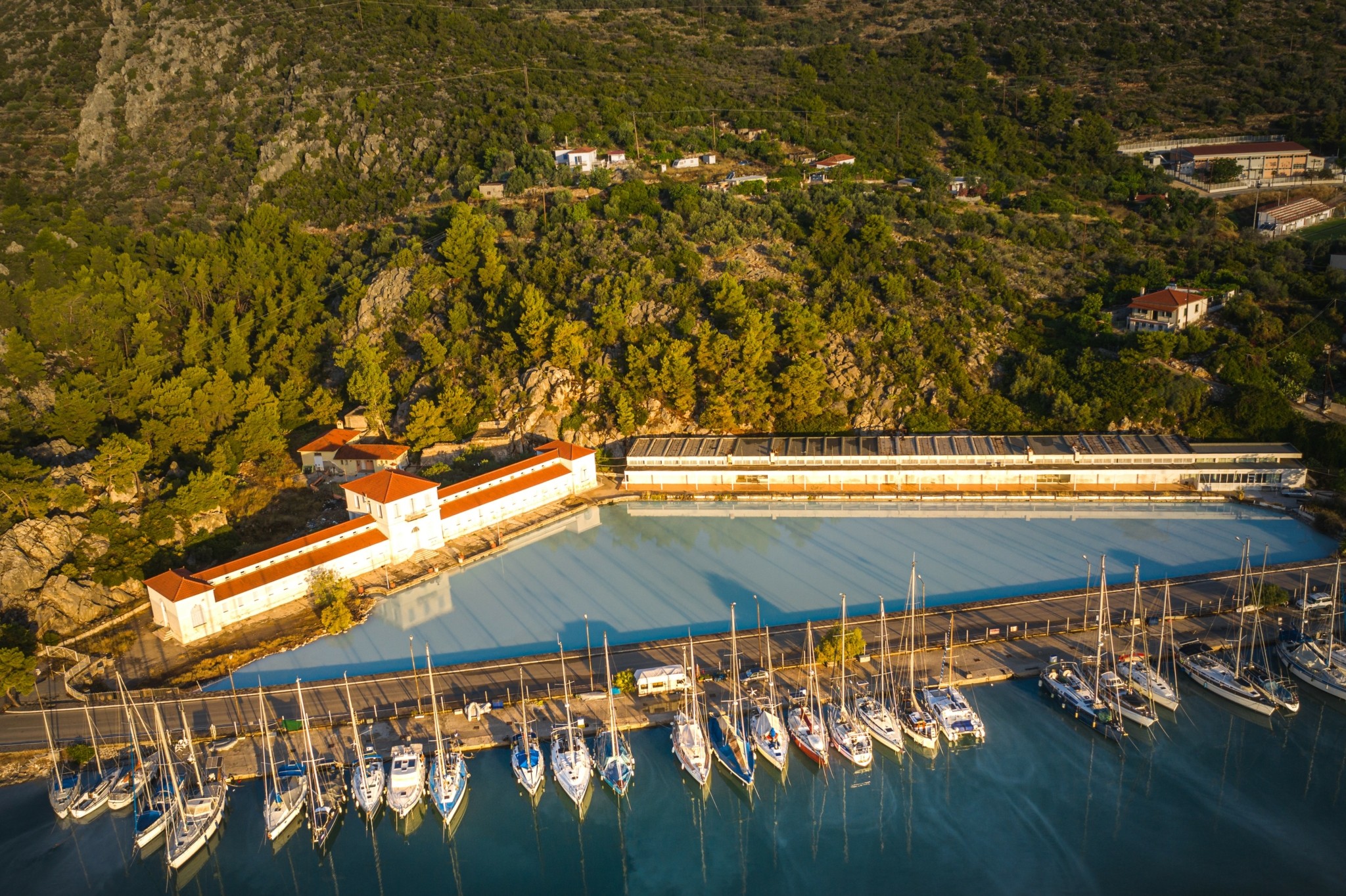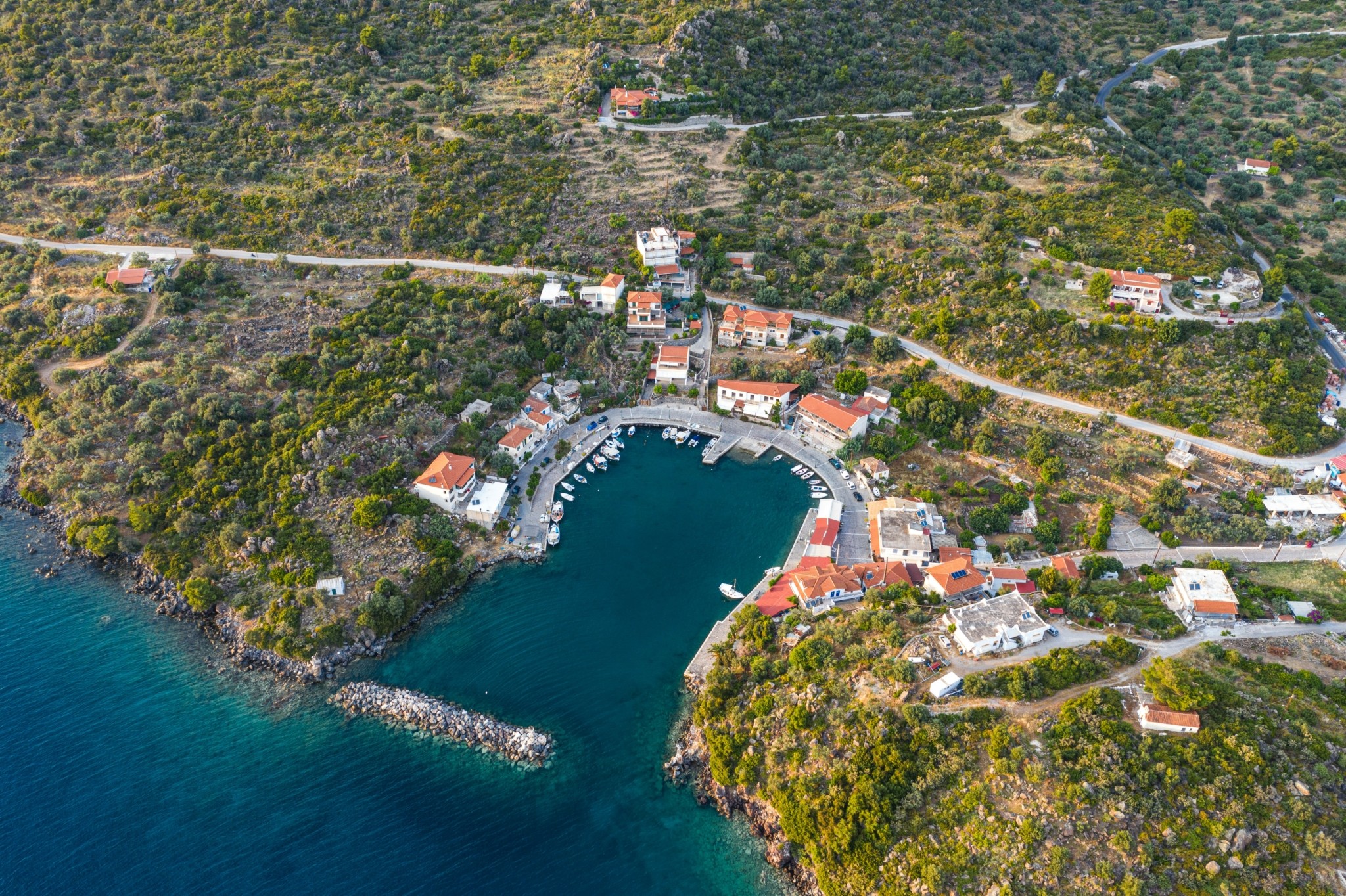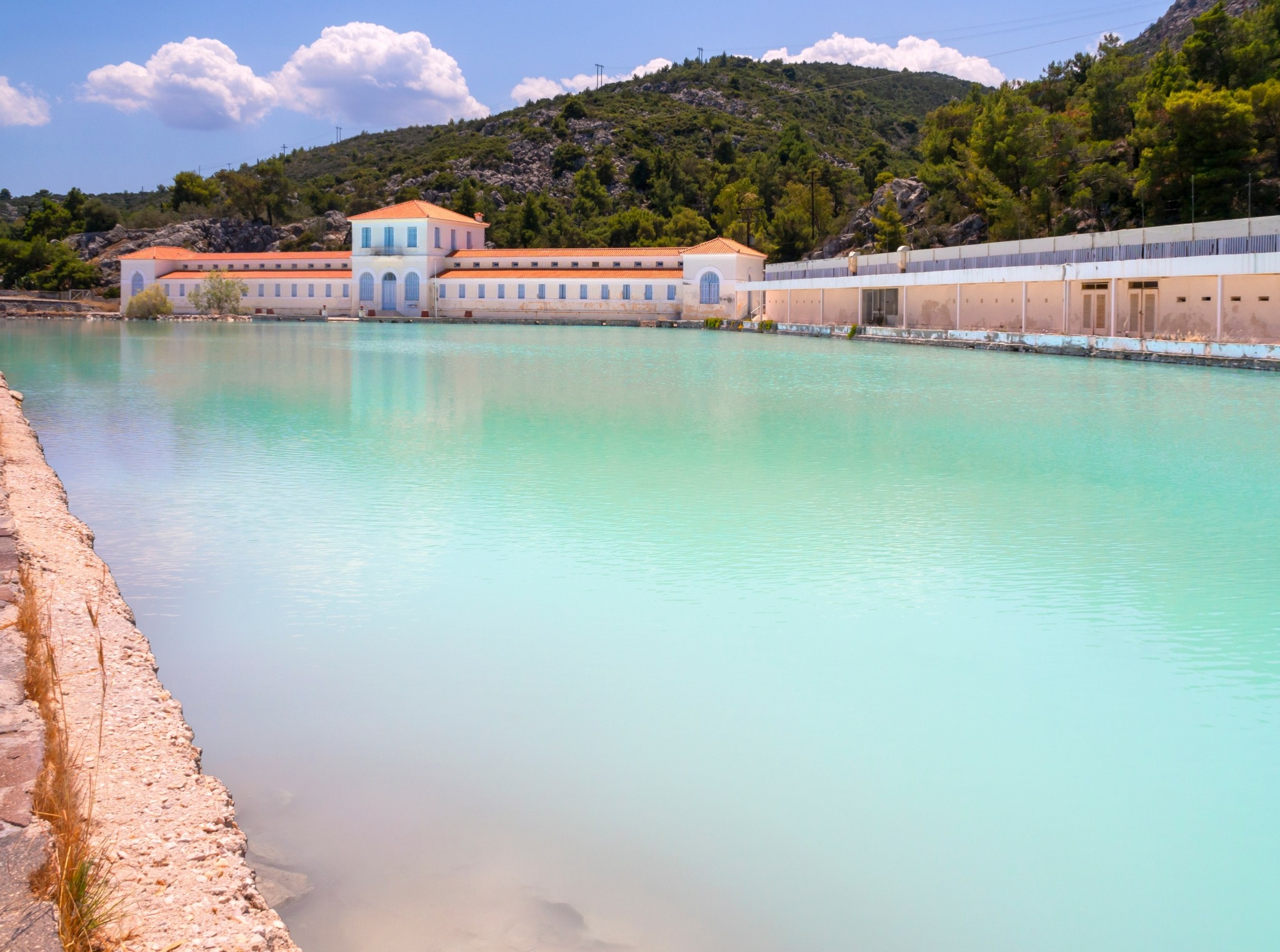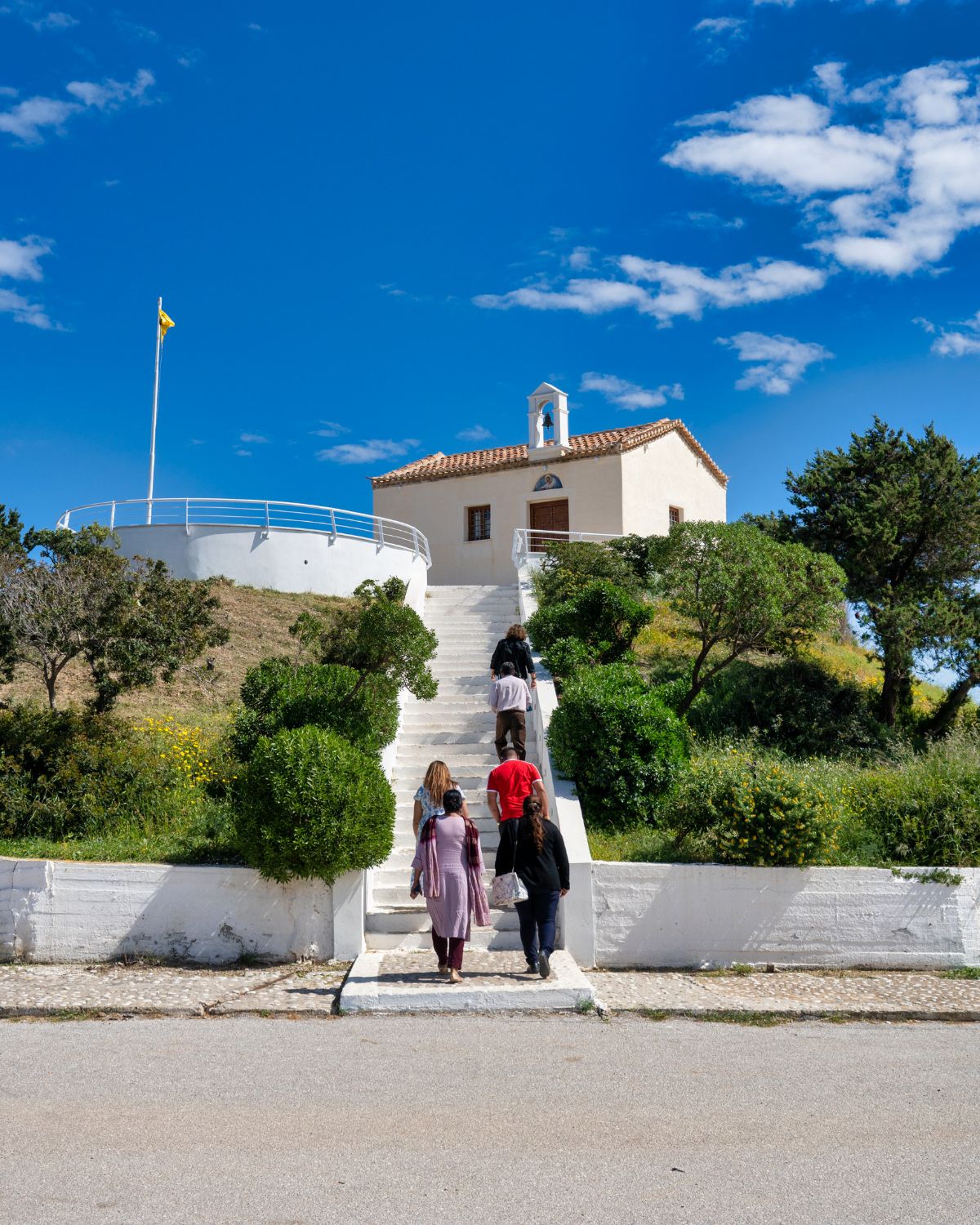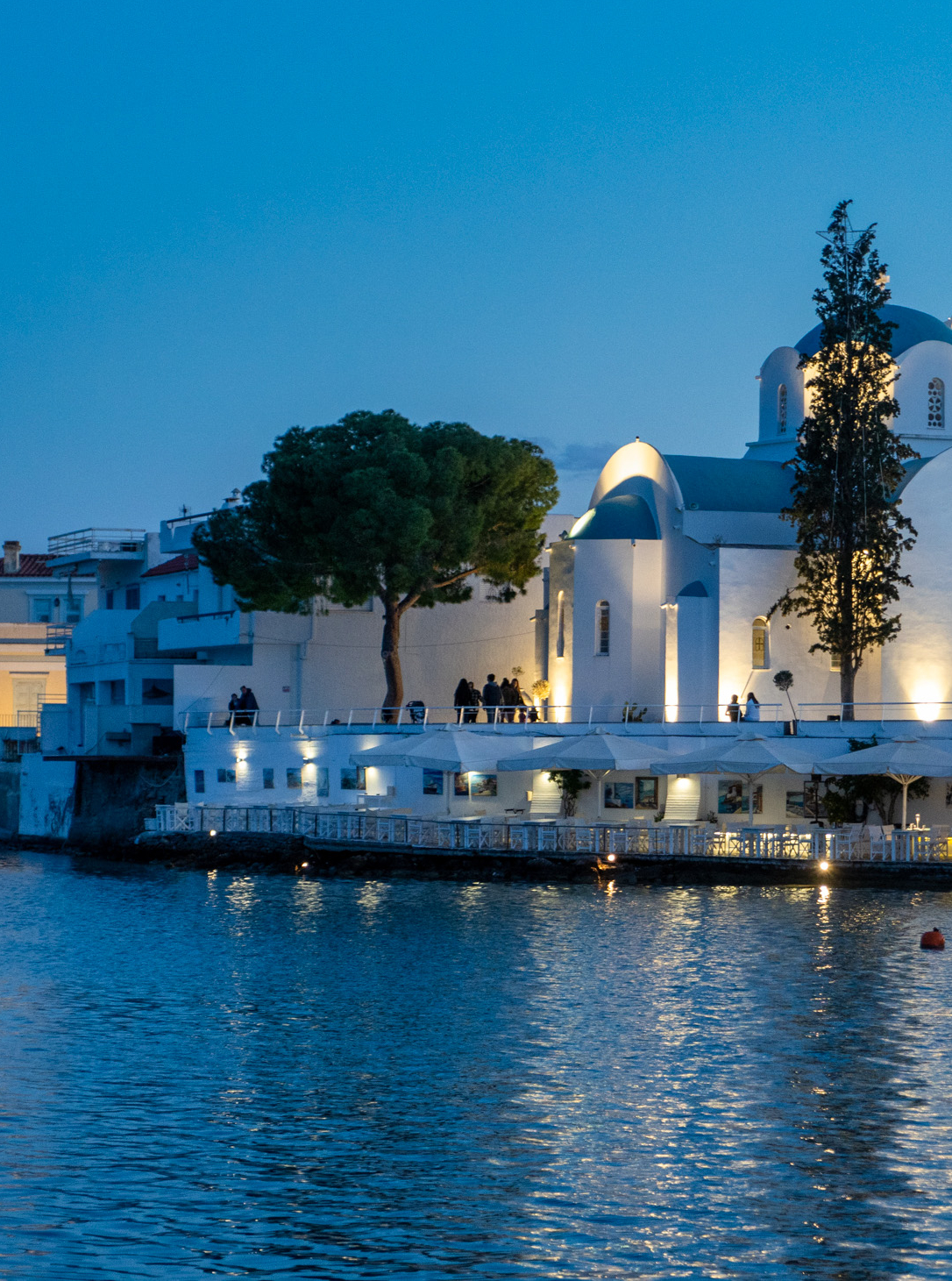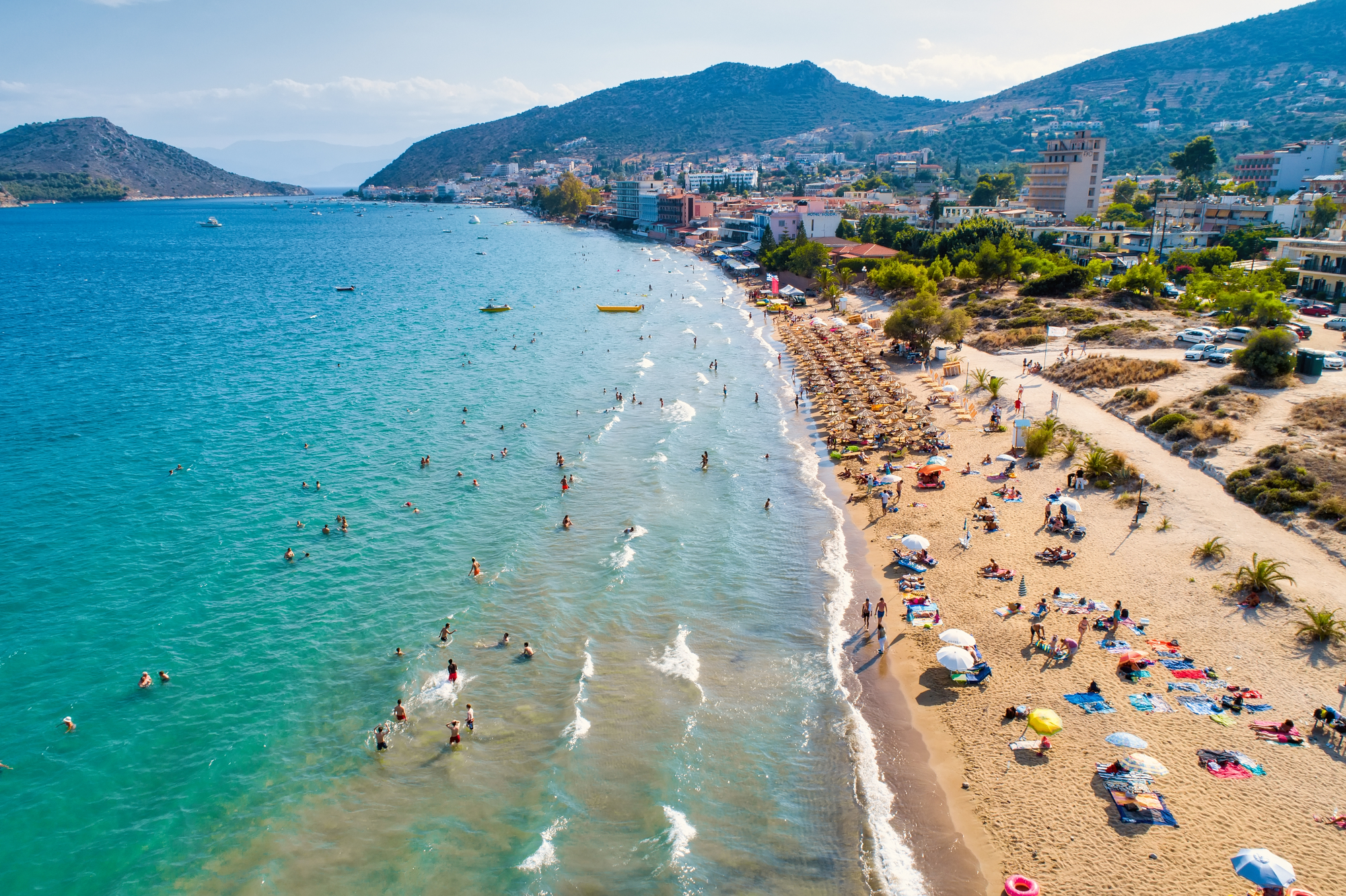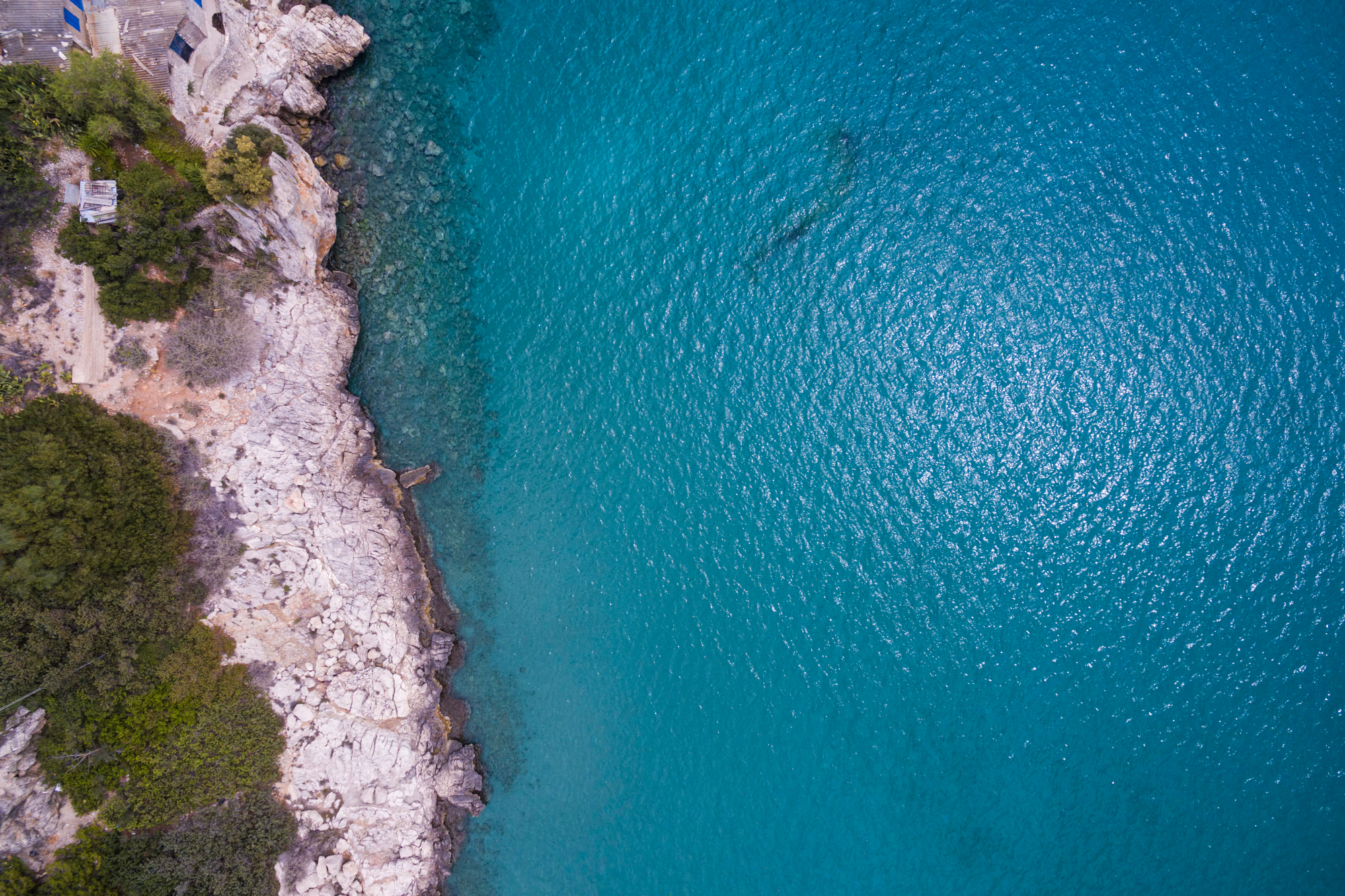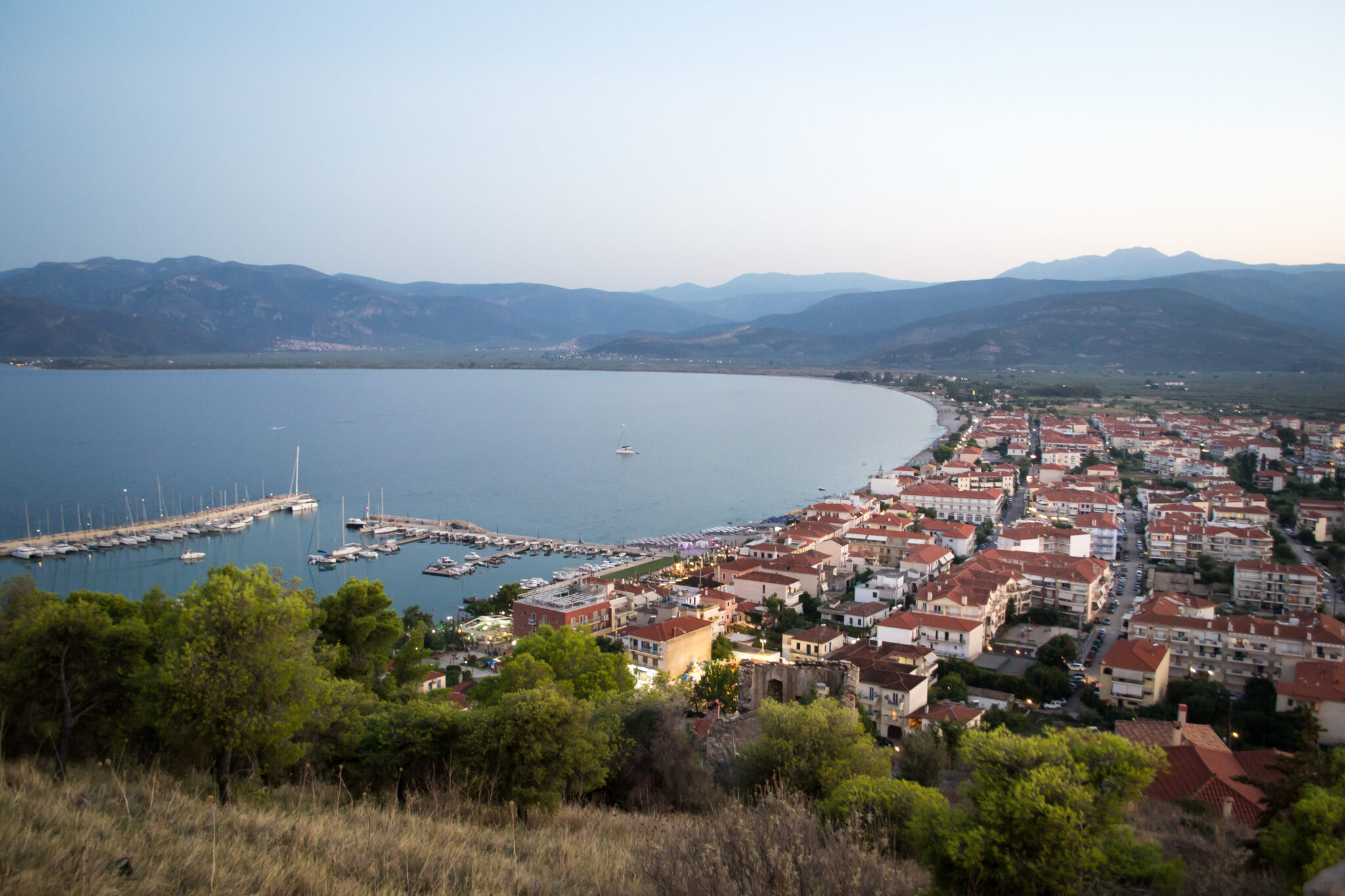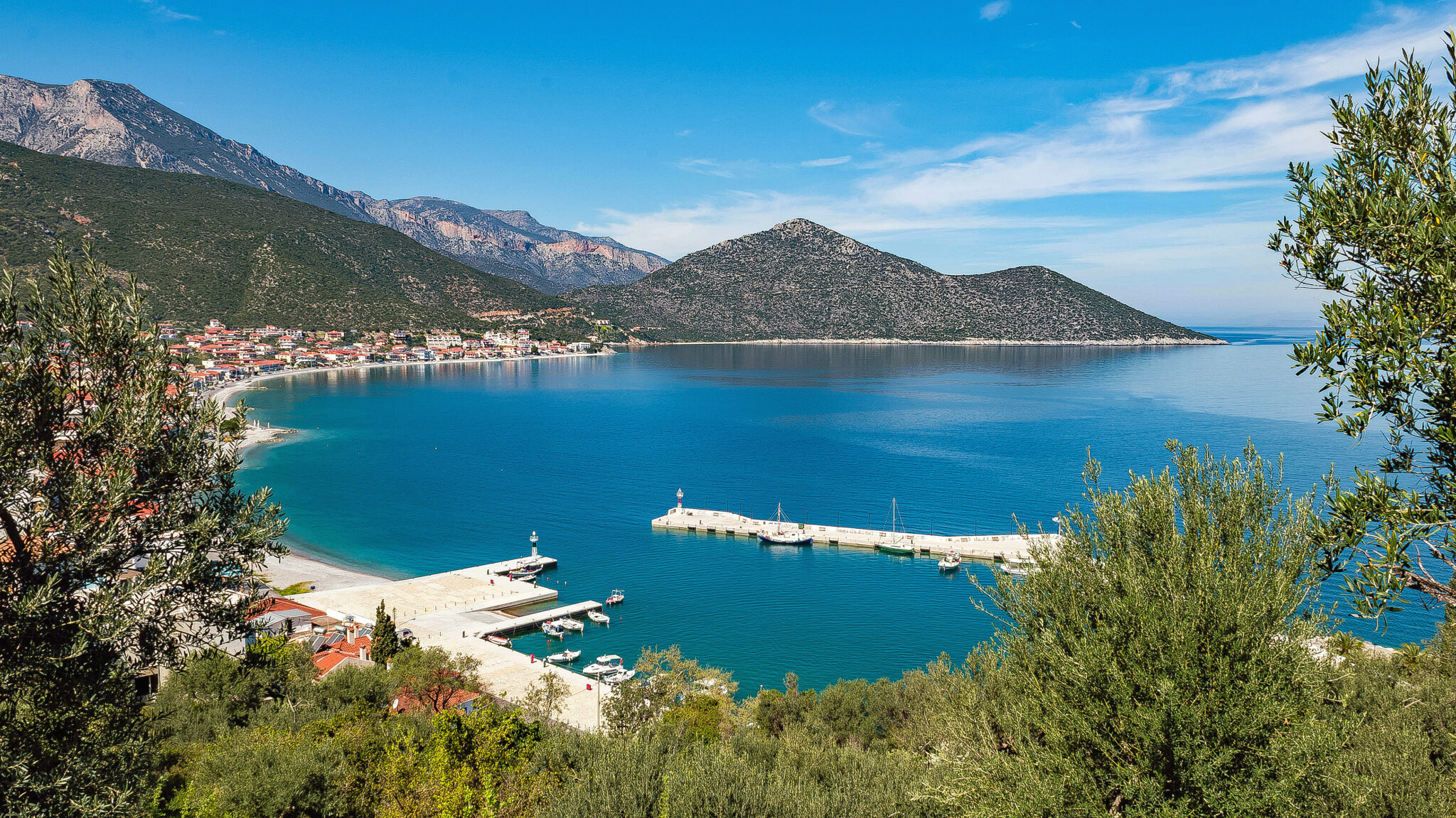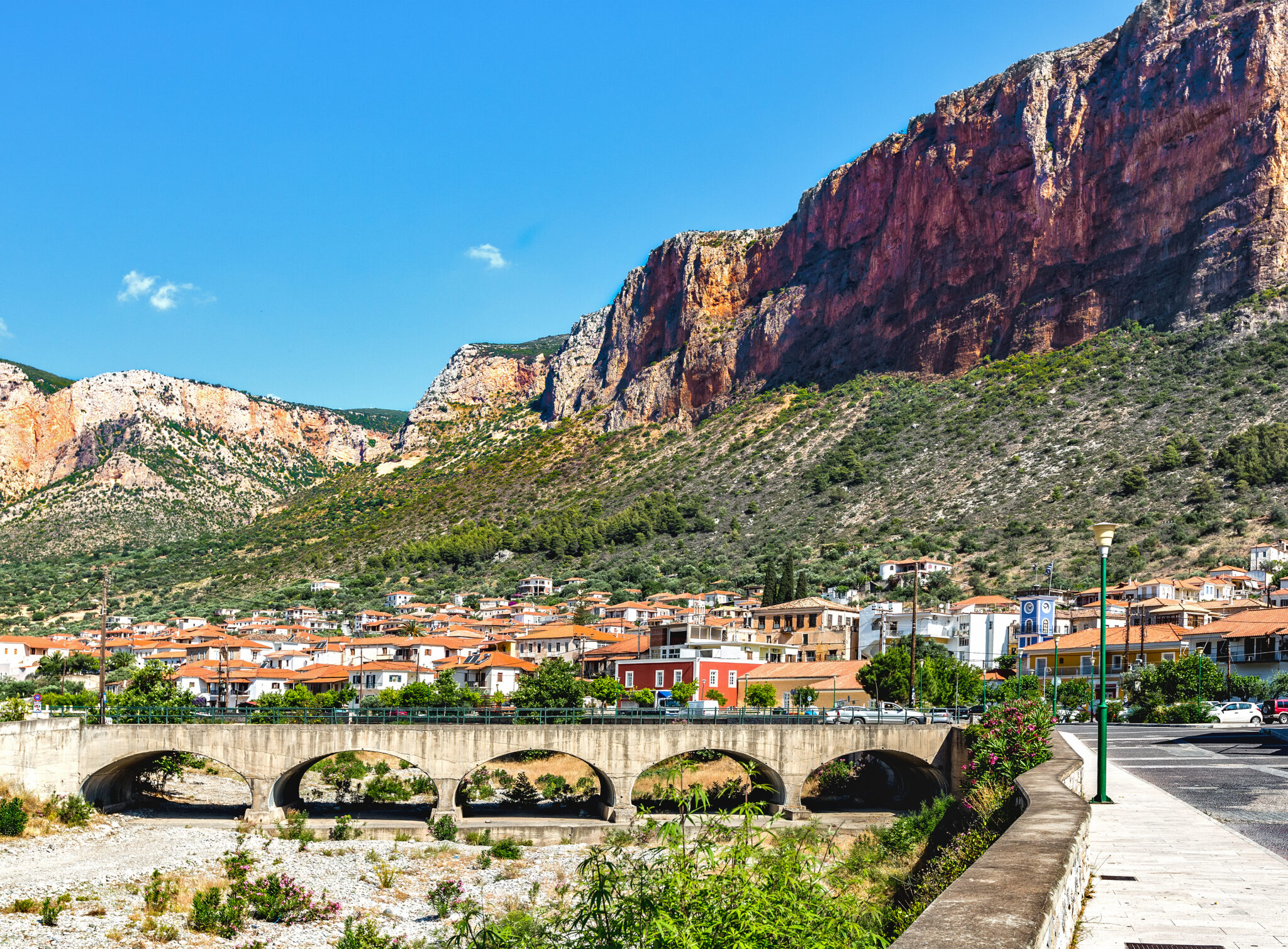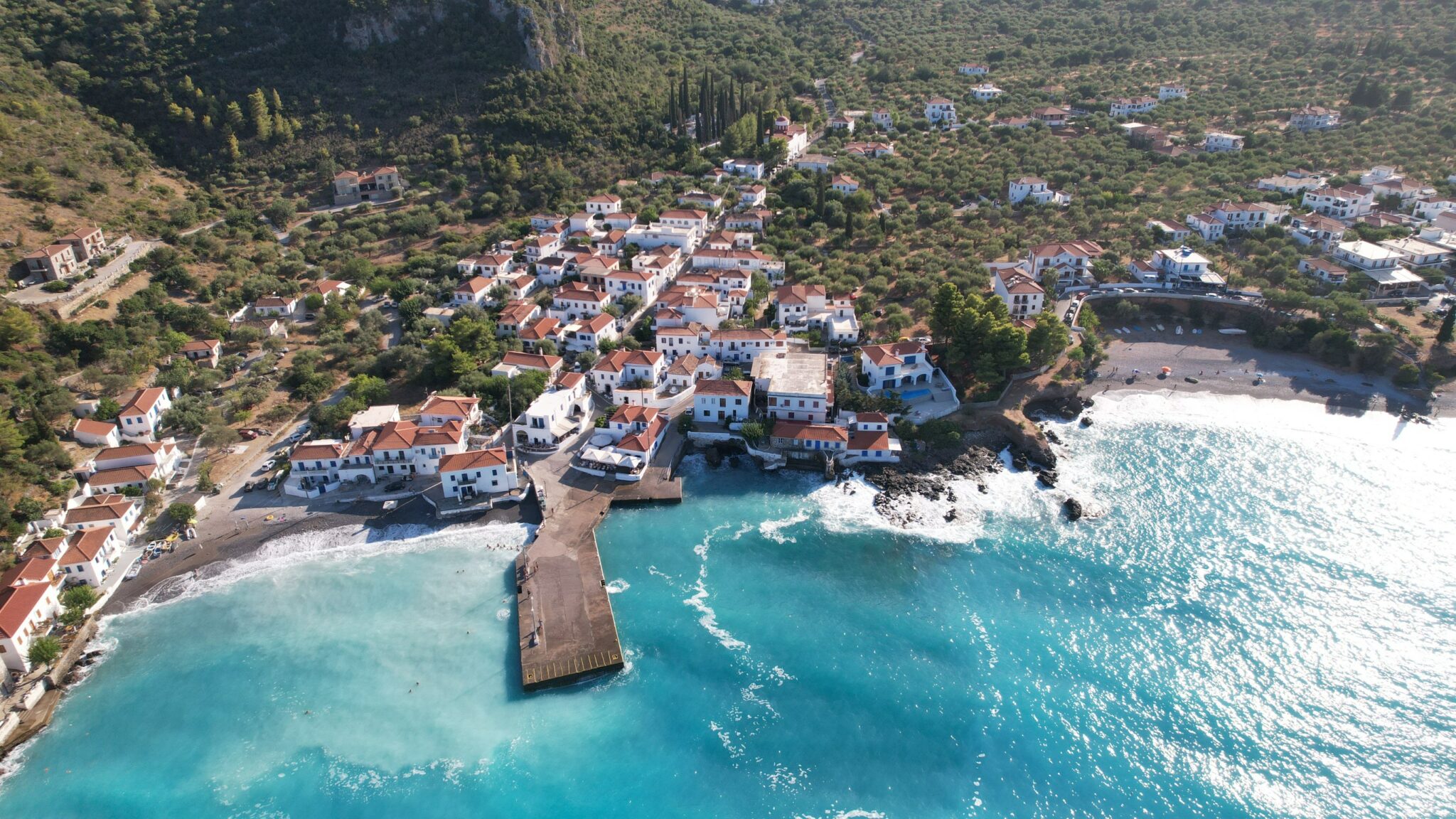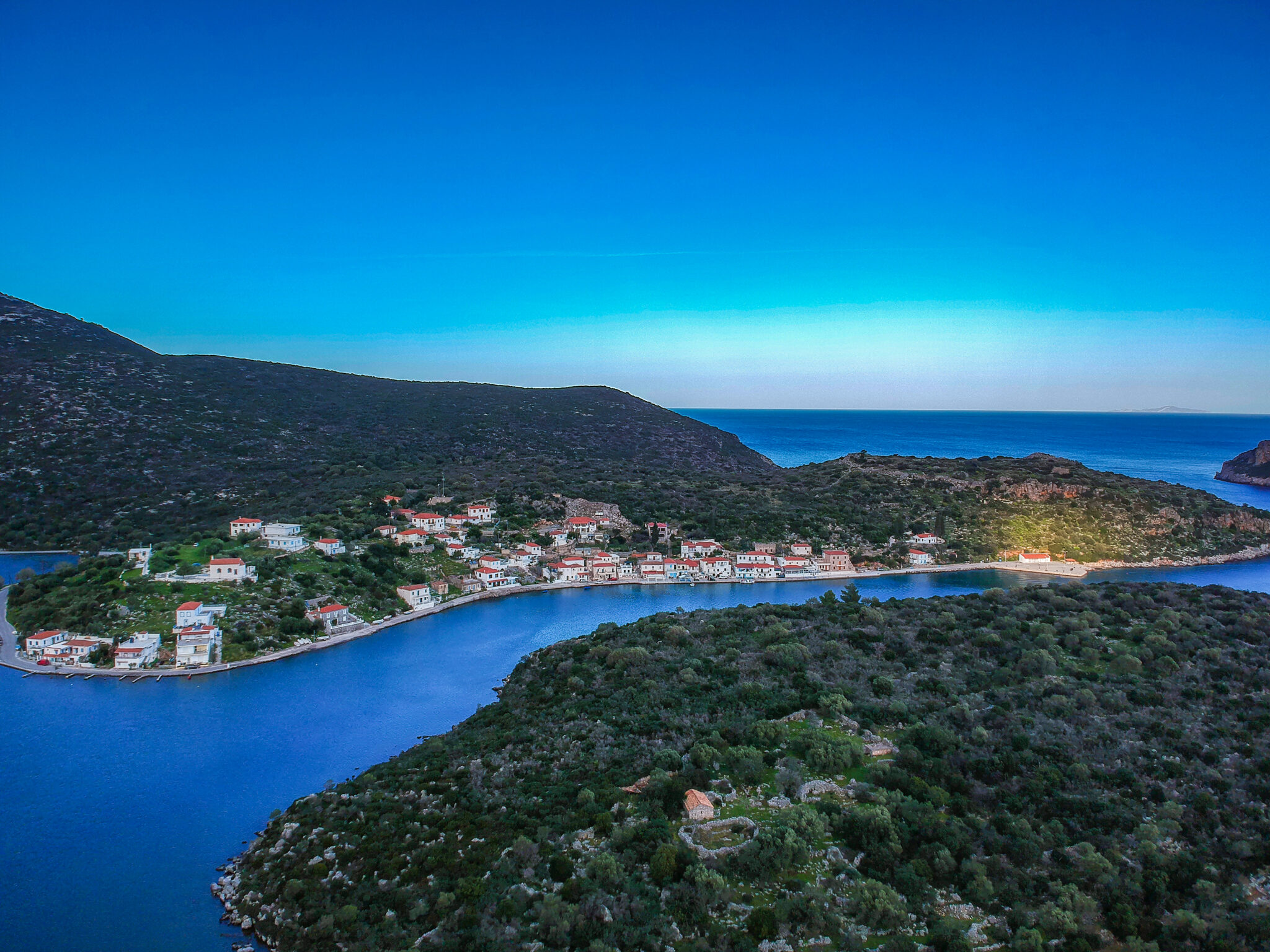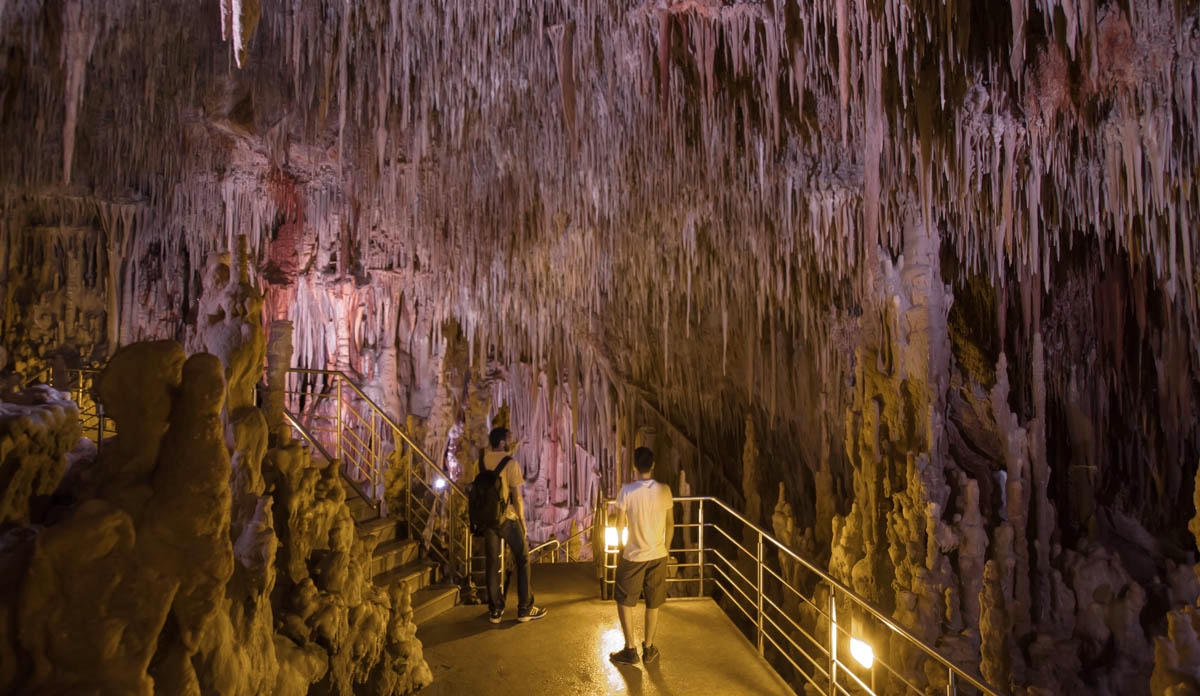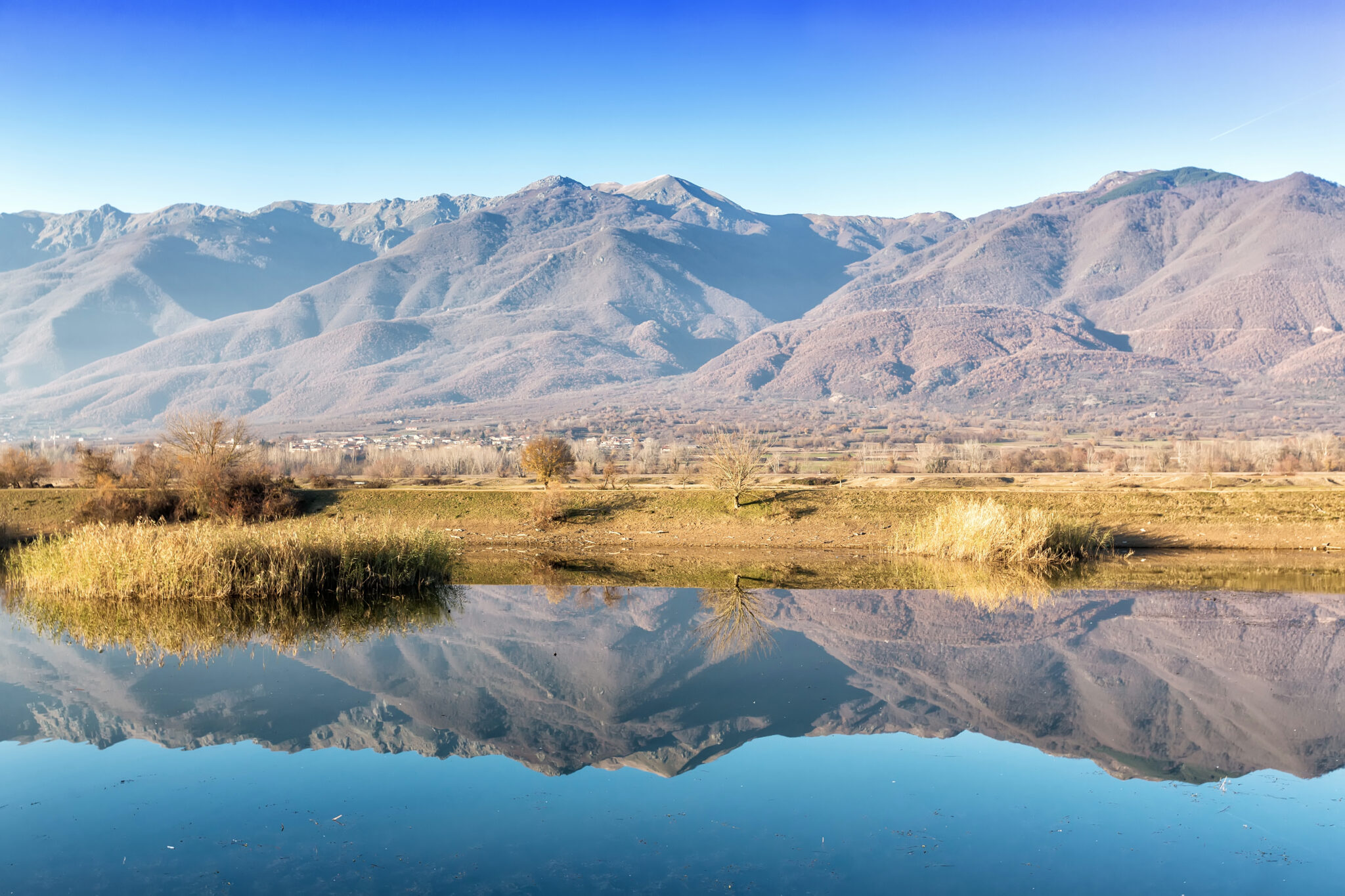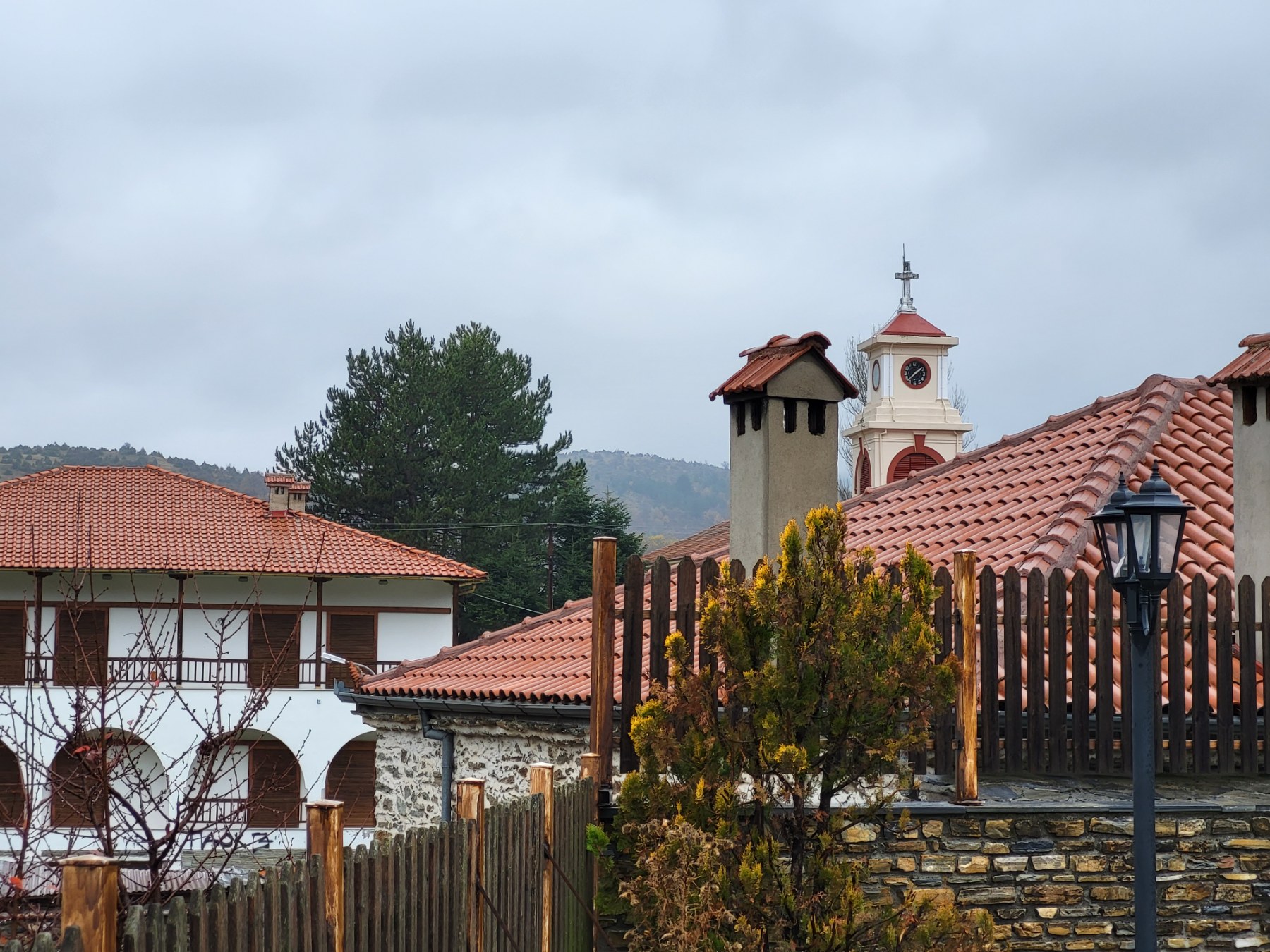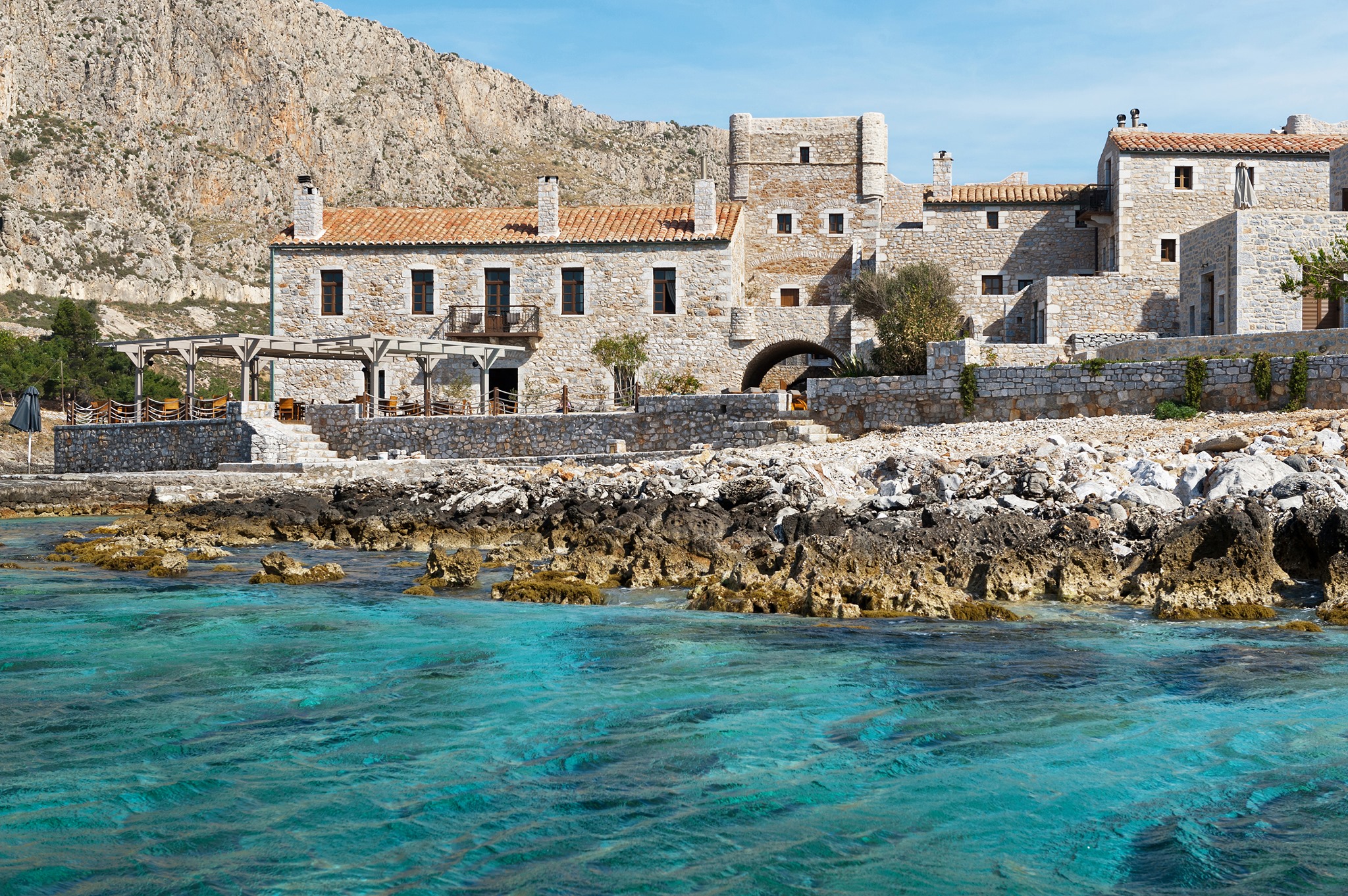The eastern coasts of the Peloponnese feature a range of lovely villages, small towns, and fantastic beaches. From the underwater archaeological site at Kechries to the rock of Monemvasia with its medieval ambience, you can discover your own little paradise for a weekend escape or even a summer vacation. With Nafplio or Monemvasia as your base, head off in your Avis car on a memorable coastal adventure.
Ermioni
The town of Ermioni has a sophisticated atmosphere that reverberates from its architecture. Surrounded by lush greenery and crystal-clear waters, the town has a harbor filled with fishing caiques and sailboats. Fishermen ensure daily that fresh fish and seafood are supplied to local tavernas, while sailors and others keenly sample the local cuisine. You can wander through Ermioni’s narrow streets and explore its beaches, such as Kouverta, Lepitsa, Petrothalassa, Dardiza, Leukes, Maderi, and Sentoni, among others. Diving activities are also available.
If the weather isn’t perfect, you can walk through the pine forest of Bisti to the top of the hill, where you’ll find the foundations of an ancient temple. Additionally, you can visit the Historical and Folklore Museum of Ermioni (open in July and August) and the 11th-century Monastery of Agioi Anargyroi. In the evening, make your way to the Mandrakia district for a drink by the sea.
Kechries
Located in the Corinth prefecture, Kechries, along with Lechaio, once served as one of the two ports of Ancient Corinth. Although the village itself doesn’t possess any particular charm, it is worth stopping by its beach. Here, you’ll find the remains of a port submerged in the sea. It is believed that the first construction works date back to the Archaic period, while the ruins visible today are the result of Roman interventions. The harbor was horseshoe-shaped, with two artificial breakwaters.
On the southern breakwater, you’ll find remnants of storage spaces, a temple dedicated to the goddess Isis, and a 4th-century Paleochristian basilica. The northern breakwater features a square tower, a sanctuary of Aphrodite, and various other structures. In the broader area of the beach and ancient harbor, you can also discover the remains of a Roman architectural complex, a Roman mausoleum, and the underground Roman cemetery on Koutsongila ridge, where its painted decoration is still preserved.
Korfos
Korfos is a small harbor nestled within a bay, approximately 30 kilometers from the Oraia Eleni Baths. If you’re seeking a tranquil, relaxed place to spend a few days, Korfos is ideal. Pine-covered slopes and olive groves rise behind it, while clear waters and pebble beaches stretch out before it.
The side of the bay you’ll encounter while descending to the village is slightly more bustling, with taverns and cafes. The opposite side of the bay, however, is quieter and features small coves and rocks where you can lay your towel for even greater peace. Although the seabed here is full of sea urchins, it does offer some advantages, as you can collect numerous urchin shells and enjoy the perfect conditions for snorkeling.
Ancient Epidaurus
Ancient Epidaurus is connected to the Athens Festival and performances at the ancient theater. However, it has much more to offer. In addition to the ancient theaters, the small and the large, it is also home to the archaeological site of Asclepeion, where the large theater is located. This is where the medical science began, and it served as the headquarters of the god of medicine in antiquity and the most important therapeutic center in the Greek and Roman world.
Asclepeion
The site includes two sanctuaries, dedicated to the god Asclepius and Apollo Maleatas, as well as a series of other buildings such as the Tholos, which is considered the finest circular building of ancient Greek architecture and played a significant role in the cult of Asclepius. The site also features the Katagogion, the largest building in the area that functioned as a guesthouse, the “Building E,” a worship space, the Stadium where athletic competitions in honor of Asclepius took place, the small temple of Artemis, and the restaurant. A museum is also present, exhibiting artifacts dating from the Archaic to the Roman era. You can swim at Kalymnios Beach, where the submerged ancient city with its Mycenaean tombs awaits – don’t forget to bring a mask – as well as Gialasi Beach, Vagonia, Kalamaki, and Panagia Polemarcha.
Methana
Methana is well-known for its volcano and therapeutic baths, which owe their existence to the volcano’s activity. Surrounded by lush greenery and beautiful beaches, it’s an ideal spot for swimming and enjoying delicious meals at local taverns. You can swim at Agioi Anargyroi, Akti Karastamati, Foflaka, Agios Georgios, Moucha, Limniona, Kounoupitsa, Agios Nikolaos, Vathy, Almyra, or any other spot that appeals to you. On the Throni plateau, above Megalochori, you’ll encounter the largest terrestrial crater, one of the thirty, belonging to Methana’s volcano.
Vathy, the picturesque fishing village on the Methana peninsula Methana Baths in the Agios Nikolaos area, ancient baths and remnants of a Roman-era reservoir have been preserved, while the Kypseli beach is home to the ruins of a classical-era fortress with remains of an ancient temple inside. It’s worth visiting the Faviero Castle on the narrow strip of land connecting Methana to the Peloponnese, at an altitude of 80 meters. The villages of Agioi Theodoroi, Palaia Loutra, and Megalochori are perfect for day trips. And, of course, don’t leave Methana without visiting the therapeutic baths at the harbor. The spring water is rich in precious trace elements and minerals, and its temperature exceeds 30°C. Springs can be found along the waterfront in Methana town and on the northern side of the peninsula at Agios Nikolaos.
Porto Heli
Porto Heli was once a cosmopolitan destination that gradually declined, but it has recently re-emerged as a hot spot, particularly after the investment by Aman Resorts in the area. Here, you can find countless accommodation options, ranging from budget-friendly to luxurious, as well as an abundance of dining, coffee, and drink options. The area also boasts organized and unorganized beaches to suit every taste. You can swim at the small Kosta beach, opposite Kova, at Hinitsa with a view of the islet, at the pebbly Korakias beach with incredible greenery in the background, at Ververonda, and at the more inaccessible Megalo and Mikro Pefko with lush greenery and beautiful waters.
You can also swim at the beaches opposite the harbor, at Agios Emilianos, Kounoupi, or any other spot you like for laying out your towel. A leisurely stroll takes you to the archaeological site of Aliis, a settlement that existed since the Neolithic period, and which was reorganized by the inhabitants of Tiryns in the 5th century BCE. The area also features an ancient acropolis with remains of houses, workshops, and a religious center. If you have time, take a boat from Kosta for a trip to the aristocratic Spetses.
Tolo
Tolo was a favorite holiday destination in the ’80s and ’90s, and despite its decline for several years, it has started to attract people’s interest again. It is also a destination for peaceful, carefree getaways. Here, you can do almost everything on foot, walk down to the beach of Psili Ammos for a coffee with a view of the sea and the small islands opposite, or dive into the beautiful waters and go for a meal at the tavernas next to the waves.
A little further away is Kastraki beach, a small beautiful cove with transparent waters and pebbles, very close to the archaeological site of Ancient Asini, which you can also visit on foot. If you want noise and beach bars, the huge beach of Drepano is exceptionally close. Tolo Bay is ideal for windsurfing, kitesurfing, and canoeing, and you will find the corresponding water centers. Also, there are diving schools for beginners and experienced divers, with the help of which you can explore the wonderful seabed of Koronisi, Romvi, and Daskaleio, the three small islands embraced by Tolo Bay.
Astros
Paralia Astros is a small seaside village just 4 kilometers away from Astros. It is built at the foot and on the slope of a hill, on top of which stands a castle. It has a lively harbor with fishing boats and an island atmosphere. The settlement is beautiful, with many parts of it being quite picturesque. Also, here, you will come to spend leisurely spring and summer days. You will swim at Kallisto with its sand and fine pebbles, at Portes, which is essentially a continuation of the previous beach, at Atsiganou to the north of the settlement, and next to Glyfada. Strolling through the alleys and the place “Nisi” at the top of the hill is a must, with stone houses, beautiful courtyards, and of course, the climb up to the castle. For coffee and food, the harbor is the best choice, while it is worth going a little outside the settlement to visit Moustou Lake and the wetland it creates.
Tyros
The small town of Tyros is located at the edge of the Argolic Gulf, between Astros and Leonidio, and is surrounded by beautiful waters. It is essentially divided into three zones: the upper district at the foot of Mount Parnon, the lower district, which is sparsely populated with courtyards full of flowers, olive trees, and citrus trees, and the beachfront where some neoclassical houses still remain, giving the area a picturesque atmosphere. The small harbor is filled with fishing boats, and just above it, on the hill, there are traces of the ancient acropolis. In some other spots, parts of the city’s Cyclopean walls are visible. Apart from the main beach in front of the settlement, to the north, there is the pine tree-lined Tiganis beach, and to the south, the Lygaria beach with its amazing waters.
Leonidio
Leonidio is a beautiful small town in the shadow of Mount Parnon that still retains much of its picturesque charm. As you stroll through its narrow streets, you will see well-kept mansions and grand neoclassical buildings from the 19th century with beautiful flower-filled courtyards. Leonidio is also the birthplace of the famous Tsakonian eggplant, which even has a summer festival in its honor.
While Leonidio is not located directly on the coast, it is very close to the sea and can be reached in less than 10 minutes by car. The organized beach of Plaka with its small harbor offers beautiful waters, while the beaches of Lakos, Poulithra, and Thiopauto, set against a backdrop of olive groves, are also lovely. The small harbor of Sambatiki, a quarter of an hour to the north, with a handful of houses, is perfect for a quiet stroll and a meal. If you enjoy rock climbing, note that Leonidio has a climbing field. If you visit in August, be sure to attend the Tsakonian eggplant festival to sample the local cuisine in all its variety.
Kyparissi
Kyparissi is a beautiful village with a strong traditional character. You will see whitewashed houses with colorful windows and doors, terracotta roofs, and well-kept courtyards everywhere. The main settlement is not on the coast, but there is a much smaller coastal settlement where a wonderful mix of Maniot and Cycladic architecture can be seen, with simple white cubic houses and blue windows and doors. The beautiful nature here extends all the way to the coast. For swimming, head to the small harbor or a little further north to Megali Ammos beach or Agia Kyriaki, which is very close and absolutely stunning. If you want to explore the area around Kyparissi, the villages of Haraka, Lambokampos, and Pistamata are good choices.
Gerakas Port and Lagoon
Nestled between Kyparissi and Monemvasia lies the small, picturesque harbor of Ieraka, also known as Gerakas, and an impressive lagoon. The area is protected under the NATURA 2000 network, attracting a diverse array of rare migratory birds, including numerous herons. The lagoon, covering approximately 400 hectares, is also home to shrimp, sea bream, pipefish, crabs, and lobsters. One part of the lagoon exhibits a striking orange-red hue, resulting from both the aquatic plants and the soil composition. To the south, a small islet can also be found.
During the Byzantine era, the harbor served as a naval base to combat Saracen pirates, as well as a safe anchorage for all ships when storms beset the wider region. Though the harbor is small, it is incredibly picturesque and well worth a visit. Relax at one of the local tavernas and savor fresh seafood. Note that to the northeast of the settlement, atop a hill, stands the ancient acropolis of Zaraka, offering stunning views of the area.
Kastania Cave
Kastania Cave may not be as renowned as its Laconian counterpart, Diros Cave, but it is ranked second of its kind throughout Europe. The cave’s breathtaking formations took approximately three million years to develop. The space boasts a dense array of shapes, colors, and forms, including massive stone structures resembling waterfalls in white and red hues, and columns in various striking forms, which, with a touch of imagination, appear as animal figures, creating a mesmerizing spectacle.
Visitors can explore a 500-meter-long accessible route within the cave. The speleothems are composed of crystalline carbonate limestone, enriched with metal oxides from the subsoil, resulting in a vibrant, seven-color palette. Interestingly, the cave’s first visitor was a shepherd who followed bees entering and exiting a hole in the ground, prompting him to dig a larger opening to discover the reason behind the bees’ mysterious behavior. This exploration led to the unearthing of Kastania Cave.
Read also:
Kyparissi: Unpretentious seaside jewel of the Lakonia area
Methana: A Volcanic Peninsula on the Eastern tip of the Peloponnese, Greece



